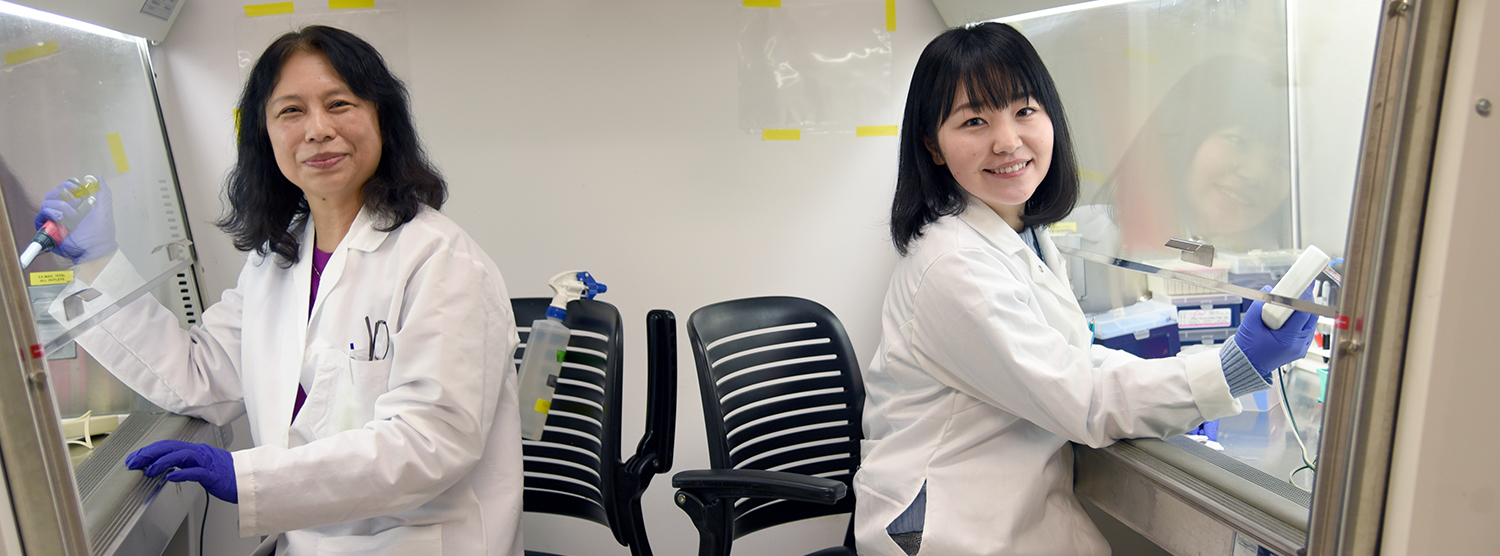Mechanism of Progranulin Deficiency in Frontotemporal Lobar Degeneration
A major part of our research focuses on the pathogenesis of frontotemporal lobar degeneration (FTLD) caused by mutations in the Progranulin (GRN) gene. To this end, we have generated and characterized several mouse models, including the global Grn knockout, microglia-specific conditional Grn mutant mice, and mutant mice that harbor the GRN-R493X mutation, a common mutation in familial FTD patients. In addition, we use transcriptome profilings and glia-neuron co-cultures to show the molecular and cellular mechanisms of microglial and astroglial activation as the major disease-driving factors to the pathogenesis of FTLD in mouse models and human patients with GRN mutation. Building upon our understanding on the biology of Progranulin, we are keen in uncovering the broader role of glial pathology in other neurodegenerative diseases, such as Alzheimer’s Disease and amyotrophic lateral sclerosis (ALS).
Molecular and Cellular Mechanisms of Human Brain Development
Rooted in Eric’s prior training as a developmental biologist, the laboratory has a long-standing interest in the transcriptional and trophic factor-dependent regulations of neuronal migration, differentiation and neural circuit formation during embryonic and postnatal brain development. Through collaborations with other UCSF colleagues, this line of research has been further expanded to investigate how glia-neuron and neurovascular interactions affect brain development under physiological conditions and in neurodevelopmental disorders. As the Director of Pediatric Neuropathology Research Laboratory (PNRL) at UCSF, Eric oversees a large operation for the procurement of high quality fetal and infant brain tissues for basic and translational research. Using these tissues, we have been successful in understanding the fundamental mechanisms of human brain development and to investigate mechanisms of neurodevelopmental diseases.
